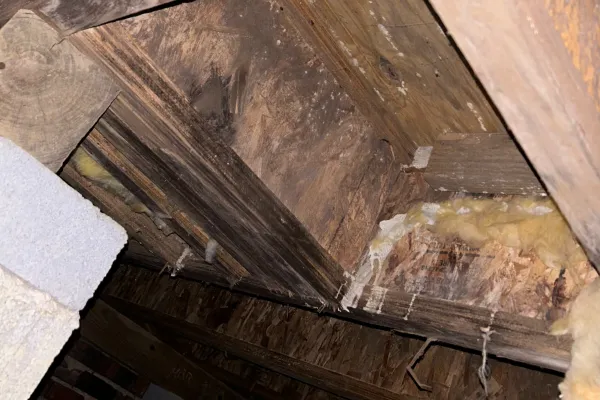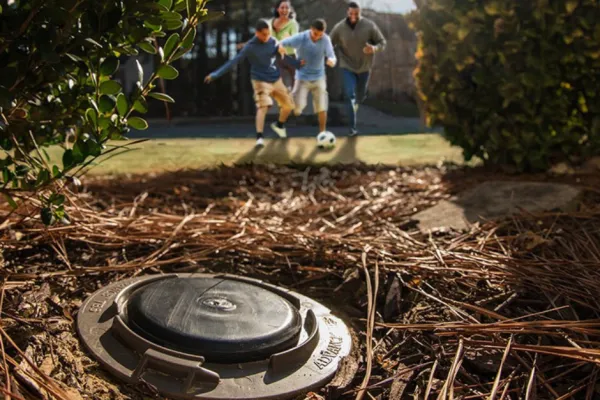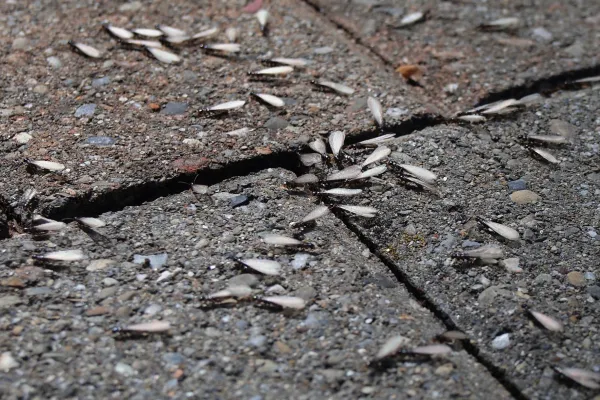How to Identify & Eliminate Termites

Nobody enjoys unwanted house guests. They show up at the most inopportune time with a suitcase in tow and no intention of leaving soon. They disrupt the harmony of your home, invading your personal space and bringing along their own demands and inconveniences. Similarly, a termite infestation is a lot like having unwanted house guests. Termites are silent intruders that infiltrate your home, hidden from sight, and quietly gnaw at the very foundation of your peace of mind. They can cause extensive damage to the structure of your house, compromising its integrity and potentially costing you a fortune in repairs. While we can’t help you halt your Aunt Mildred’s extended stay, we can offer some tips and tricks to kick termites to the curb. Just like dealing with unwanted house guests, addressing a termite infestation requires proactive measures and effective strategies. Have a termite protection plan and follow these helpful tips to identify and eliminate your termite infestation.
Identifying the Infestation
Identifying a termite infestation is the crucial first step in eliminating it. However, this task can be more challenging than it seems, as termites are adept at remaining unnoticed while devouring the structural integrity of your home from within. Signs of infestation vary depending on the termite type—Subterranean, Drywood, or Dampwood—each with its own characteristics and habits. Each termite species’ distinct biology and behavior determine their geographic distribution, nest-building preferences, and potential for home damage.
Subterranean Termite
Subterranean Termites, live in nearly every US state besides Alaska; however, there are typically larger numbers of them in warmer, humid climates such as the Carolinas. They are found below ground level and are naturally attracted to damp or decaying wood. These termites strongly prefer excessive moisture, making areas like drains, leaky pipes, and wooden structures directly in contact with soil, such as porches or fences, highly appealing to them. Signs of subterranean termite damage include frass, discarded termite wings, sagging or drooping floors, small holes in drywall resembling tunnels, peeling or bubbling paint, flooring with blisters, tunnels, or gaps, tiny mud tubes leading to the home’s foundation, and persistent clicking sounds produced by termite jaws as they chew through solid materials.
Drywood Termite
Drywood termites thrive in warmer, coastal environments. They are commonly found on the West Coast; however, they can extend along coastal areas in the US, such as Texas and Florida, or even all the way to us in the Carolinas. Drywood termites pose a significant threat to homes because they prefer dry, structurally sound wood. These termites establish colonies by chewing chambers within various wooden components of the house, including roof sheathing, attic beams, rafters, siding, porches, decks, floors, door and window frames, and furniture. Look out for the following signs of drywood termite damage: the presence of frass (termite droppings), soft clicking sounds originating from the walls, discarded termite wings, cream-colored termites sometimes referred to as “white ants,” hollow wood, and difficulties in closing doors or opening windows.
Dampwood Termite
Dampwood termites, mainly found in damp western states, thrive in moist or decaying wood and differ from other termite species with the absence of shelter tubes. They can reside entirely within the wood they consume. Dead or decaying wood and damp decomposing leaves create an ideal environment with ample moisture for these pests to thrive. They will also infest things such as poles, bridge, timbers, and other structure near water. Signs of dampwood termite damage include wood that sounds hollow when tapped, wood that feels soft or squishy to the touch and an absence of frass (termite droppings) being pushed out of holes. It’s important to note that dampwood termites have a unique behavior of using their droppings to seal openings in the wood they infest.
Eliminating the Infestation
After identifying an infestation by examining your home for the aforementioned signs, your next step should be irradicating these pests from your premises as soon as possible to avoid any additional costly structural damage. Similar to their signs, the termite extermination methods differ depending on the species.
Getting Rid of Subterranean Termites
There are a few professional options for taking on a Subterranean termite infestation.
- Liquid Termiticide Barriers: Professional-grade termite-killing products, such as liquid Taurus SC and Termidor SC, are some of the most effective ways exterminators target termite infestations. It can be applied along the exterior perimeter of your home to establish an undetectable protective barrier.
- Termite Baits: Termite baits, expertly installed around your home’s foundation, attract foraging termites to a slow-acting toxin that disrupts their growth and is carried back to the colony, eliminating the infestation.
Getting Rid of Drywood Termites
The most effective way to treat Drywood Termite infestations is fumigation.
- Fumigation: This process involves containing the affected area and introducing a targeted fumigant that permeates the space, reaching even the most inaccessible corners where drywood termites may be hiding. Our professional exterminators ensure that every step is executed with precision, from sealing the area to monitoring gas levels and conducting thorough post-fumigation assessments. Professional fumigation not only eliminates existing drywood termite colonies but also reduce the risk of reinfestations.
Getting Rid of Dampwood Termites
Eliminating Dampwood Termites requires a targeted strategy that acknowledges their distinctive habits. As professional exterminators, we begin by conducting a thorough inspection to identify the extent of the infestation and the areas affected. For tree infestations, an arborist should be consulted for the best course of action. When dealing with structural infestations, our focus lies in the removal of the infested damp or wet wood, which serves as a crucial step in eradicating their presence. Additionally, we emphasize addressing moisture sources in and around the property, as these termites are drawn to high-moisture environments. It is important to not only eliminate the current infestation but also to implement preventive measures that guard against future reinfestations, ensuring the long-term protection of your property.
Professional Help
Knowing when to seek professional help for a termite infestation is crucial to effectively address the problem and protect your property. Professional termite exterminators possess the knowledge, experience, and specialized tools to accurately assess the extent of the infestation, implement targeted treatment strategies, and provide ongoing prevention measures to safeguard your home from future termite damage. With over 58 years of experience, Palmetto Exterminators offers superior service in termite control. If you have any questions termite protection services, please reach out to us at Palmetto Exterminators for expert guidance and assistance.


